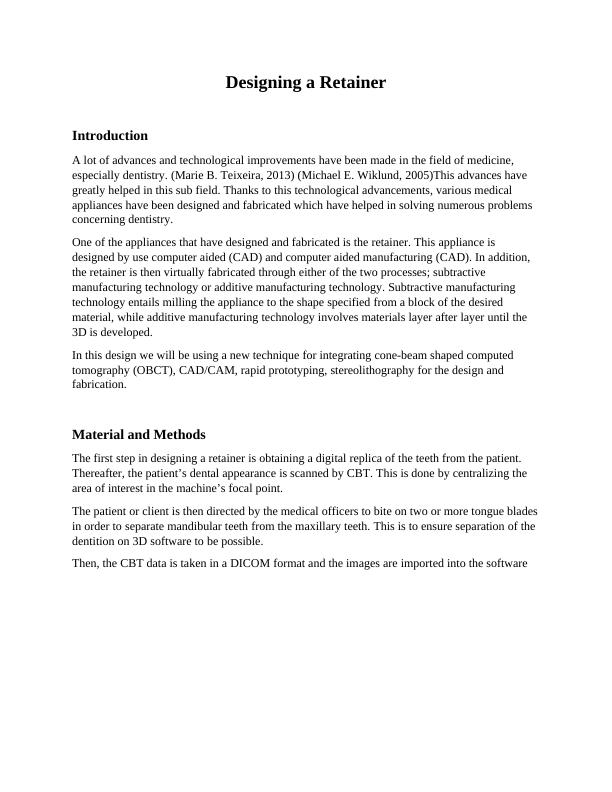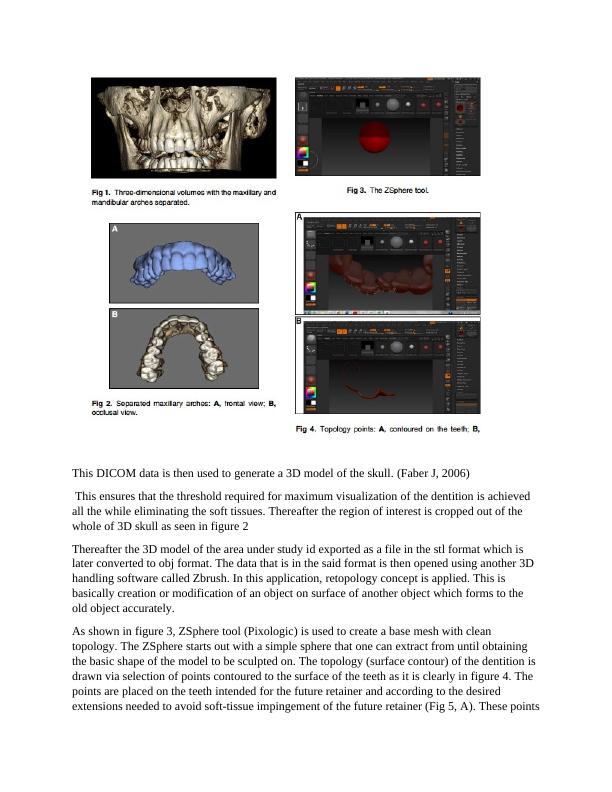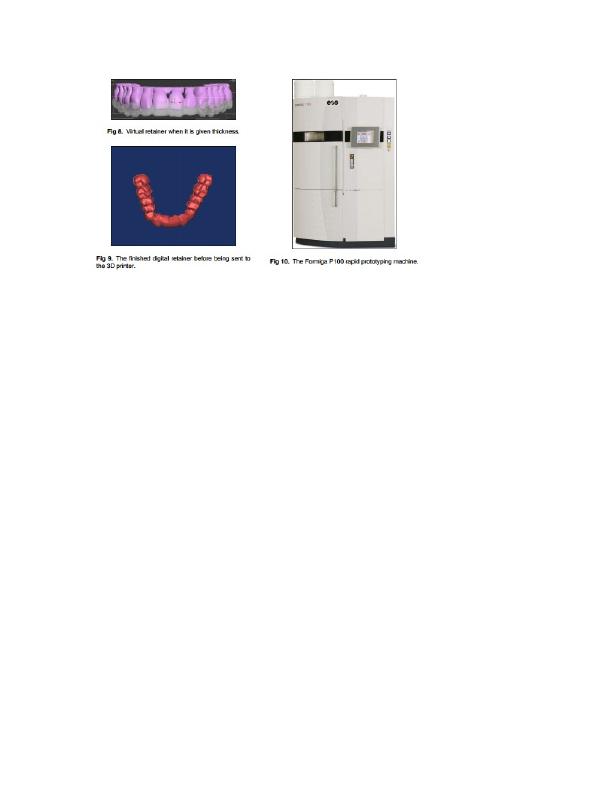Designing a Retainer
6 Pages1503 Words221 Views
Added on 2023-04-12
About This Document
This article discusses the process of designing a retainer using CAD/CAM and rapid prototyping technologies. It explains how CBCT data is integrated and the advantages of this technique. The article also highlights the possibilities of future advancements in dental appliance fabrication.
Designing a Retainer
Added on 2023-04-12
ShareRelated Documents
End of preview
Want to access all the pages? Upload your documents or become a member.
Report on Selective Laser Melting
|6
|690
|316



